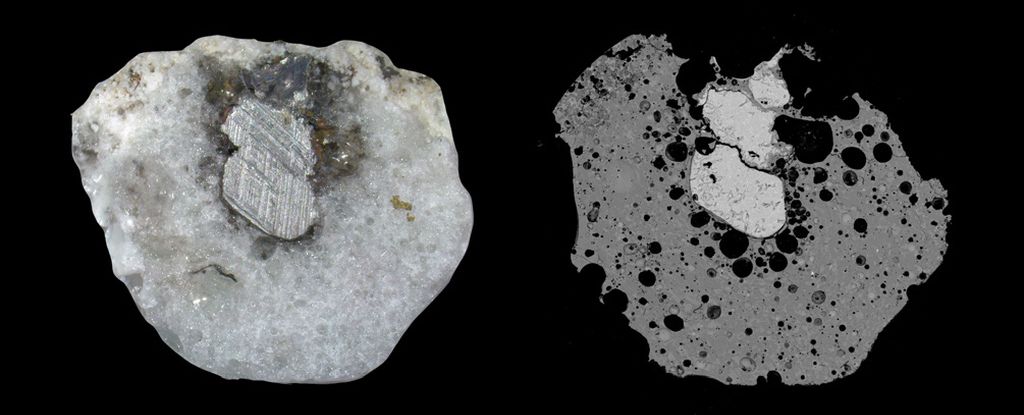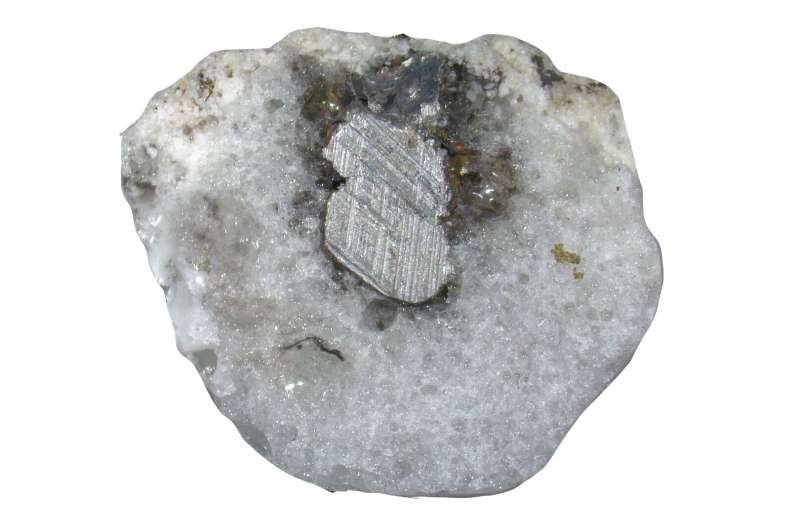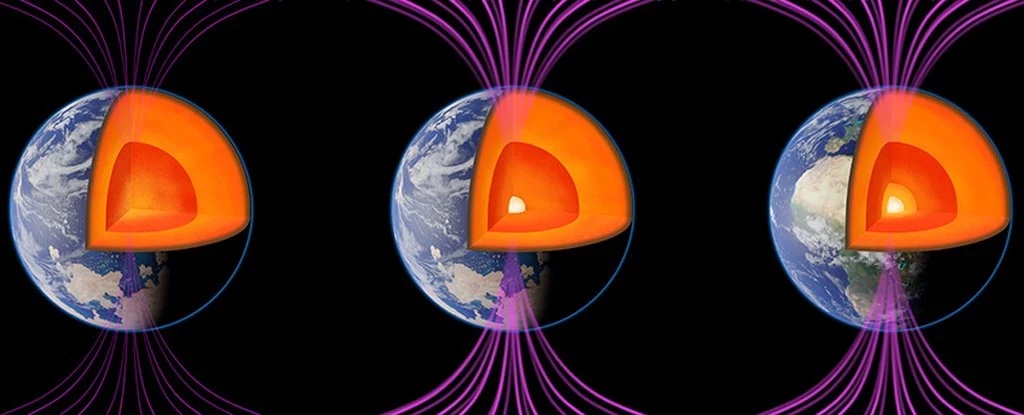
Oldest Crystals In The World Reveal Earth Had Rain And Oceans 4 Billion Years Ago IFL Science - June 4, 2024
Scientists develop 'X-ray vision' technique to see inside crystals PhysOrg - June 4, 2024

A team of New York University researchers has created a new way to visualize crystals by peering inside their structures, akin to having X-ray vision. Their new technique which they aptly named "Crystal Clear" - combines the use of transparent particles and microscopes with lasers that allow scientists to see each unit that makes up the crystal and to create dynamic three-dimensional models.
Lightning Strikes Create a Strange Form of Crystal Rarely Seen in Nature Science Alert - January 30, 2023

Inside a piece of fulgurite - or 'fossilized lightning' - created by a powerful bolt of electricity traveling into and fusing sand, scientists have found a quasicrystal, an arrangement of matter once thought to be impossible. This discovery suggests there are previously unknown formation pathways for quasicrystals, opening up new avenues for their synthesis in the laboratory. The current investigation was designed to explore a different possible nature-inspired mechanism for generating quasicrystals: electrical discharge.
Quasicrystal formed during accidental electrical discharge PhysOrg - December 30, 2022

Quasicrystals, as their name suggests, are crystal-like substances. They possess characteristics not found in ordinary crystals, such as a non-repeating arrangement of atoms. To date, quasicrystals have been found embedded in meteorites and in the debris from nuclear blasts. In this new effort, the researchers found one embedded in a sand dune in Sand Hills, Nebraska. Study of the quasicrystal showed it had 12-fold, or dodecagonal, symmetry - something rarely seen in quasicrystals. Curious as to how it might have formed and how it ended up in the sand dune, the researchers did some investigating. They discovered that a power line had fallen on the dune, likely the result of a lightning strike. They suggest the electrical surge from either the power line or the lightning could have produced the quasicrystal.
Magnetism in Ancient Crystals Reveals When Earth's Inner Core Emerged Science Alert - July 27, 2022

Researchers have been able to use an analysis of ancient rock crystals - and the magnetism records locked inside them - to trace back the history of Earth's inner core across hundreds of millions of years. Earth's core, a dense hot blob of iron and nickel, is actually made up of two layers - the solid inner core crammed inside a molten outer core. Then comes the rocky mantle (the thickest of all the layers) and the crust that we all live on. We're talking about 2,900 kilometers (about 1,800 miles) underground. Based on the researchers' findings, it seems Earth's inner core was crystalizing into a significantly large mass around 550 million years ago. This crystalization provided enough heat to restore the magnetic field - which had depleted around 15 million years earlier - and setting the scene for a major explosion of life. Earth's magnetic field, protecting life from harmful solar winds, is actually governed by the swirling liquid iron in the outer core. As this new study makes clear, however, the solid iron-nickel alloy at the very center also has a key role to play as an energy source.
An 'Impossible' Quasicrystal Was Created in The World's First Nuclear Bomb Test Science Alert - July 27, 2022

At 5:29 am on the morning of 16 July 1945, in the state of New Mexico, a dreadful slice of history was made. The dawn calm was torn asunder as the United States Army detonated a plutonium implosion device known as the Gadget - the world's very first test of a nuclear bomb, known as the Trinity test. This moment would change warfare forever. The energy release, equivalent to 21 kilotons of TNT, vaporized the 30-meter test tower (98 ft) and miles of copper wires connecting it to recording equipment. The resulting fireball fused the tower and copper with the asphalt and desert sand below into green glass - a new mineral called trinitite. Decades later, scientists discovered a secret hidden in a piece of that trinitite - a rare form of matter known as a quasicrystal, once thought to be impossible.
Ancient 'Canyon Diablo' Meteorite Reveals Mysterious Diamond Crystal Structure Science Alert - July 26, 2022
While studying diamonds inside an ancient meteorite, scientists have found a strange, interwoven microscopic structure that has never been seen before. The structure, an interlocking form of graphite and diamond, has unique properties that could one day be used to develop super-fast charging or new types of electronics, researchers say. The diamond structures were locked inside the Canyon Diablo meteorite, which slammed into Earth 50,000 years ago and was first discovered in Arizona in 1891. The diamonds in this meteorite aren't the kind most people are familiar with.
Strange, never-before-seen diamond crystal structure found inside 'Diablo canyon' meteorite that fell to Earth around 50,000 years ago and was first discovered in 1891 Live Science - July 25, 2022
While studying diamonds inside an ancient meteorite, scientists have found a strange, interwoven microscopic structure that has never been seen before. The structure, an interlocking form of graphite and diamond, has unique properties that could one day be used to develop superfast charging or new types of electronics, researchers say. The diamond structures were locked inside the Canyon Diablo meteorite, which slammed into Earth 50,000 years ago and was first discovered in Arizona in 1891. The diamonds in this meteorite aren't the kind most people are familiar with. Most known diamonds were formed around 90 miles (150 kilometers) beneath Earth's surface, where temperatures rise to more than 2,000 degrees Fahrenheit (1,093 degrees Celsius). The carbon atoms within these diamonds are arranged in cubic shapes.